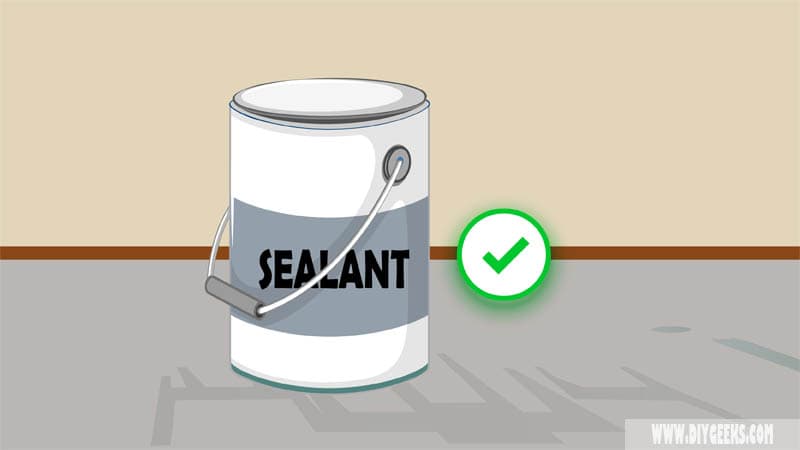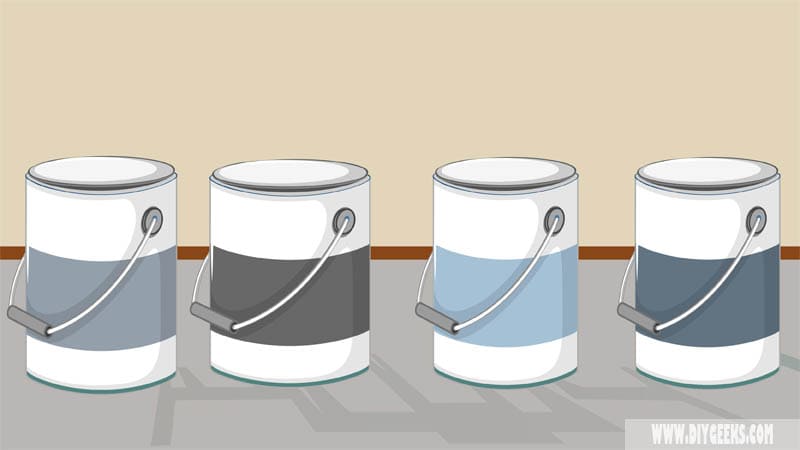You need to seal wood after staining it to increase the finish protection or durability or get a glossy finish. The sealer produces a glossy moisture-resistant layer over the wood and protects it from moisture, water, scratches, and weather elements.
The benefits of sealing stained wood include moisture-resistance, durability, easier maintenance, and weather protection.
The sealers you can use for stained wood include polyurethane, varnish, lacquer, and shellac.
Why Should You Seal Stained Wood?
You should seal stained wood for the following reasons.
- To Increase the Finish Protection.
- To Get a Reflective Finish.
- To Protect Outdoor Surfaces.
1. To Increase Finish Protection
You must seal stained wood if you want to increase the finish protection. A sealer coating creates a moisture-resistant layer (barrier) over the surface and protects it from moisture, water, scratches, and other damage.
Wood stain isn’t formulated with protective additives and will get removed if exposed to constant water. So, apply polyurethane or varnish over it.
2. To Get a Reflective Finish
A sealer coating produces a transparent glossy and reflective finish over the stained wood. The sealer coating reveals the underlying stained wood but creates a glossy appearance that reflects light over it.
3. To Protect Outdoor Surface
Exterior sealer coating creates a glossy moisture-resistant layer over the stained wood and protects it from weather elements.
Wood stain doesn’t have protective additives and will get removed if exposed to constant water or rainfall. Exterior sealers are formulated with extra protective additives, such as UV blockers.
What Are the Benefits of Sealing Stained Wood?

The benefits of sealing stained wood are listed below.
- Moisture-resistance.
- Durability.
- Easier Maintenance.
- Weather Protection.
Moisture-Resistance
A sealer coating creates a moisture-resistant layer (barrier) over the underlying surface and protects it from moisture and water. If a wooden surface is exposed to constant water, a sealer coating protects it.
Wood stain can’t protect a surface from moisture or water damage as it doesn’t contain protective additives.
Durability
A sealer coating increases the stained wood durability as it protects the wood from elements that can damage it. For instance, dirt, dust, or stains can’t affect the underlying wood stain coating as the sealer creates a slick layer (barrier) over it.
Maintenance
It’s easier to maintain a sealed stained wood because you can use solvent-based cleaners without affecting or removing the finish. The slick glossy sealer layer makes it easier to wipe dirt, dust, or debris from the surface.
Weather Protection
Exterior sealers are formulated with extra additives, such as UV blockers, that protect the underlying surface from weather elements.
When Shouldn’t You Seal Stained Wood?
You shouldn’t seal indoor or low-traffic stained wood that isn’t exposed to constant water or moisture. Indoor-stained wood doesn’t need much protection as they aren’t exposed to elements that can damage it.
For instance, low-traffic decorative surfaces, such as flower vases, don’t need a sealer coating as they don’t need much protection.
If you want to retain the original wood stain color shade, don’t apply a sealer coating as it creates a glossy layer that alters the finish color shade (a bit).
How Long Must Wood Stain Dry Before Polyurethane?
Water-based wood stain must dry for around 24 hours, while oil-based wood stain must dry for around 48-72 hours before applying polyurethane.
The exact dry time depends on the temperature and humidity levels, coat viscosity, and number of coats.
The stain must cure (dry fully) before sealing it. If you seal it too soon, the stain remains wet longer, turns sticky or tacky, and can peel off. That’s because the sealer coating traps the stain solvent (oil or water) and prevents it from evaporating.
Which Sealer Types Can You Apply Over Stained Wood?

The sealer types you can apply over stained wood are listed below.
- Polyurethane
- Varnish
- Lacquer
- Shellac
1. Polyurethane
Polyurethane is a protective coating that seals different surfaces, including wood. It creates a transparent glossy moisture-resistant finish that protects surfaces from water, moisture, or scratches.
There are two polyurethane types — oil-based and water-based polyurethane. Use water-based polyurethane for indoor stained surfaces and exterior or oil-based polyurethane for outdoor surfaces.
The polyurethane benefits are listed below.
- Moisture-resistant.
- Flexible.
- Glossy Finish.
- Easy To Apply.
- Durable.
- Easy to Maintain and Clean.
2. Varnish
You can use varnish to seal indoor or outdoor stained wood surfaces. Varnish is a transparent or semi-transparent coating that enhances the surface appearance and protects them from different elements.
The varnish benefits are listed below.
- Durable and tough finish.
- Water-resistant.
- You can use it indoors and outdoors.
- Enhances the surface appearance.
3. Lacquer
You can use lacquer to seal indoor and outdoor stained wood surfaces. Lacquer is a clear or colored coating that forms a protective layer (barrier) over surfaces and protects them from different elements.
The lacquer benefits are listed below.
- Fast dry time.
- Easy to apply.
- Easy to repair, clean, and maintain.
- Water-resistant.
- Durable.
4. Shellac
Shellac is a natural resin-based sealer that creates a protective coating over different surfaces, including wood. The sealer dries fast and comes in different amber-like color shades that complement the stained wood color shade.
The shellac benefits are listed below.
- Natural Formula.
- It doesn’t yellow over time.
- Fast dry time.
- Amber-like Color Shade.


